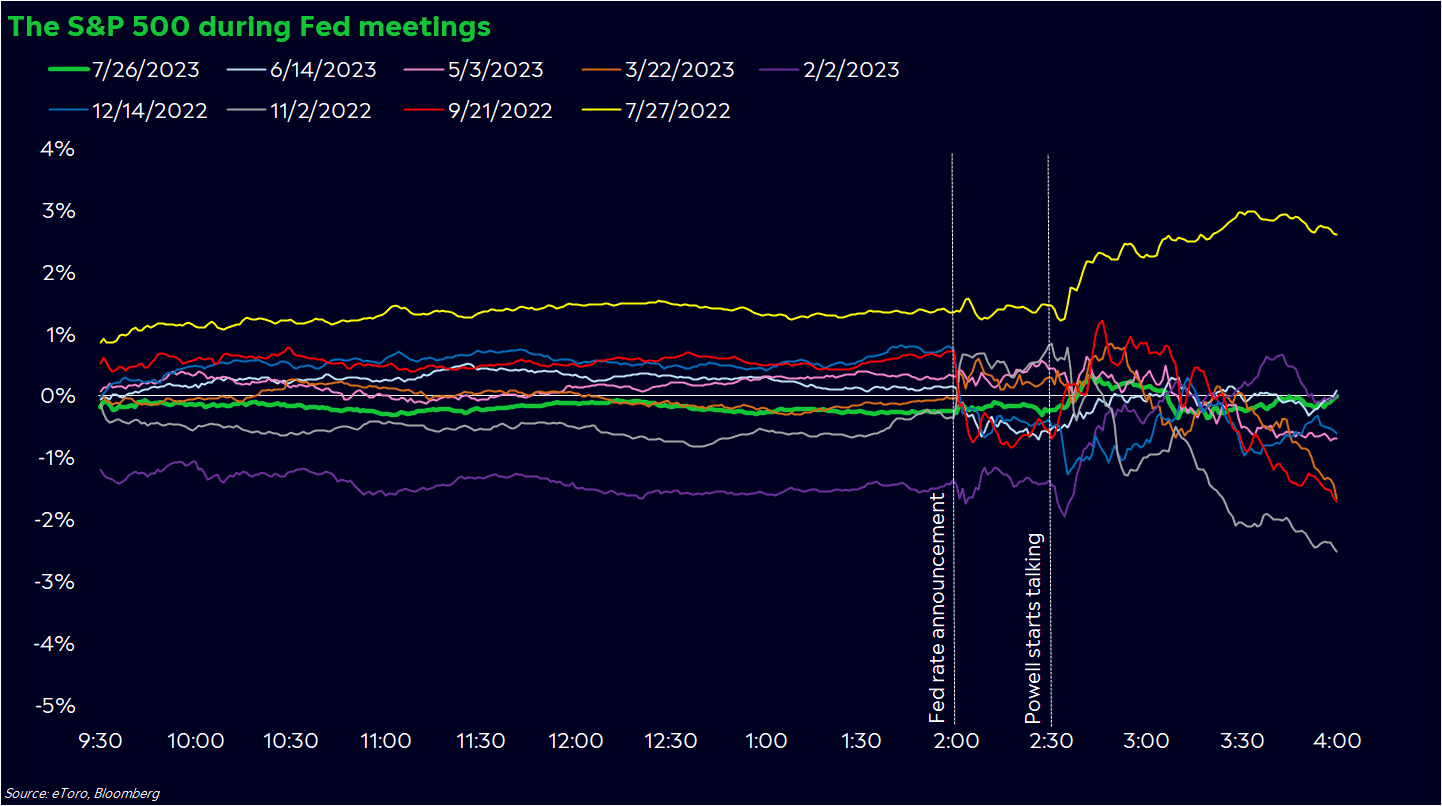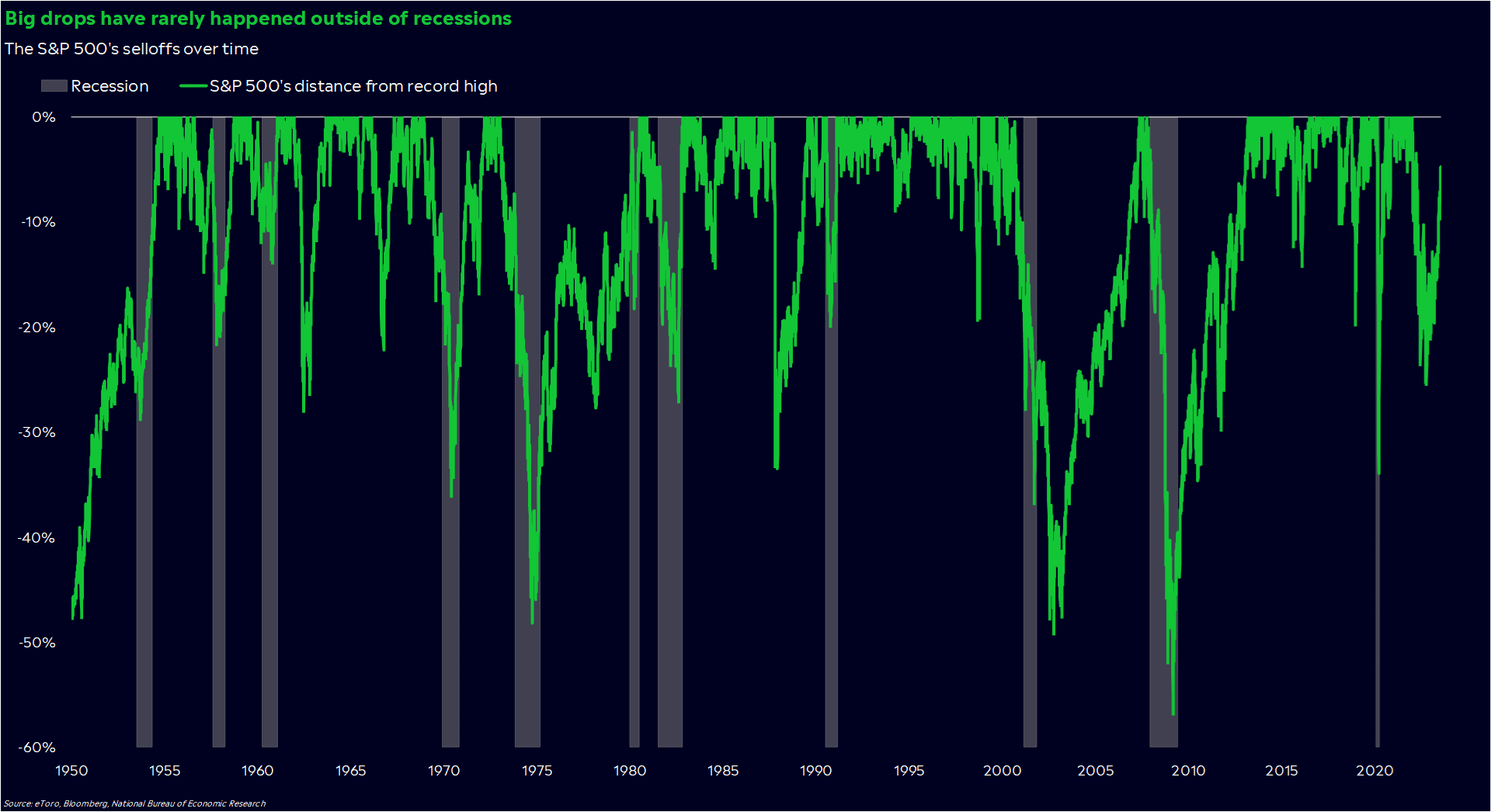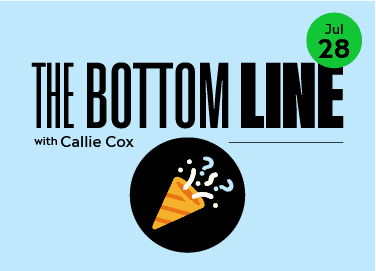One of the most well-known phrases on Wall Street is “irrational exuberance.”
It was coined by former Federal Reserve chair Alan Greenspan in 1996, around the time the now-infamous tech bubble was beginning to form. 27 years later, irrational exuberance pops up whenever stocks seem to be defying the gravity of an economic slowdown and high rates.
As you could probably guess, it’s being used a lot these days. Rates are at a 22-year high, yet the S&P 500 is also within striking distance of a record high. To many of us, that equation doesn’t add up correctly.
But this week, current Fed chair Jay Powell subtly hinted that the optimism might be more rational this time around.
A consequential Fed press conference
For most situations in life, actions matter more than words.
But for the Fed, words have mattered more than actions — at least in regards to your portfolio.

We’ve seen that in many instances over the past year, but mainly in the press conferences after each Fed policy announcement. Powell has delivered a lot of tough love — and catchphrases — during these events. Lately, he’s reminded us of how committed the Fed is to getting inflation back down to 2%, even if that means rising unemployment and a potential recession.
Until this week.
Now, the Fed’s actual policy announcement was fairly inconsequential. The 25-basis point rate hike was widely anticipated across markets, and the statement language was almost the same as in the last meeting.
But when Powell took the mic, he made three important statements:
Fed staff are no longer expecting a recession.
This was the headline of the press conference. Fed economists — an independent voice from the FOMC — were expecting a recession as recently as a few months ago. But now, they’ve dropped their recession call, supposedly in response to all the strong economic data we’ve seen as of late.
The Fed is ready to act if a recession strikes.
One of the biggest struggles for the Fed has been how to get inflation down without causing a recession. Because naturally, their two objectives — manageable inflation and healthy employment — are at odds with each other. Powell has said many times that the Fed’s number one priority has been to get inflation under control, even if it took a recession to get there.
However, when Powell was asked about how much inflation was harming Americans, he mentioned that the Fed may have to start thinking about “downside risks” to the economy. And while this sounds ominous, it could mean that the Fed is willing to adjust rates if growth slows too much because we’ve seen such progress in inflation.
Rate cuts could come as soon as next year.
To me, this was the kicker. Last month, Fed officials released a new “dot plot” — or survey of rate projections — that showed they expect a few rate cuts in 2024. Of course, people assumed that meant a recession was on the horizon. Why else would Powell cut rates after talking so tough about inflation?
Fast forward to this week. When Powell was asked about the dot plot, he gave a different theory: Fed officials probably don’t see the need to keep rates high if inflation is coming down “credibly and sustainably” next year. And even better, he added that officials may not wait until inflation hits 2% before trying a few cuts.
Put it all together, and I think Powell is sending a subtle message through his words: The economy can make it through this rough patch. And if not, we’re here to help.
Irrational pessimism
Now, before you get too worked up, I want to make a few things clear:
- The Fed has no idea if it’s done hiking rates.
- The Fed also has no special powers that allow them to know if the economy will actually avoid a recession (and remember, they were monumentally wrong about inflation).
- Most importantly, nobody knows what the future holds.
But I think Powell’s words should make you think long and hard about the risk of higher prices — and if you’re stuck in a case of “irrational pessimism”.
A lot of people just don’t believe we’re in a bull market. In fact, 86% of US investors are in that camp, according to the US segment of our June Retail Investor Beat survey. I’ve heard firsthand from people who are waiting for an even bigger drop before buying back in. And while that could happen, it might be smart to start considering a world where it doesn’t. Especially if the Fed is right, and a recession may not be coming.
Why? Because stocks have rarely dropped 20% or more outside of recessions.

The S&P 500 has gone through 10 drops of 20% or more since 1950. Seven happened during economic recessions. Stocks haven’t fallen significantly outside of crises, and we’d need a 22% drop to make it back to the October lows. Plus, the momentum seems to be in favor of higher prices — at least right now. There’s a reason why we’ve had a historic 13-day winning streak in the Dow and a breakneck rally in cyclical sectors.
The past few years have taught us all valuable lessons. One I keep coming back to is how long-term views only work if you can survive short-term moves.
There are plenty of reasons not to invest in this market. But there’s also a risk in sitting out of the market, and the Fed may have just ruled out your chance at lower prices.
So what does this mean for me?
Put the pieces together. The data has been telling us that a recession isn’t as imminent as some think. Now, the Fed seems to agree. Have you prepared for higher prices as much as you’re prepared for another selloff.
Make a plan. The best investors find a way to stay solvent, even if the market isn’t moving in their favor all the time. What can you do now to make sure you achieve your broader goals? It doesn’t have to involve a trade, either — it may be as simple as keeping up-to-date on what’s happening in markets and your portfolio.
Search for opportunity. If you’re still worried about high rates, well…I get it. But there could also be opportunities with rates this steep. It may be time to think about how you can use high rates to your advantage before they potentially slip out of your grasp.
*Data sourced through Bloomberg. Can be made available upon request.



